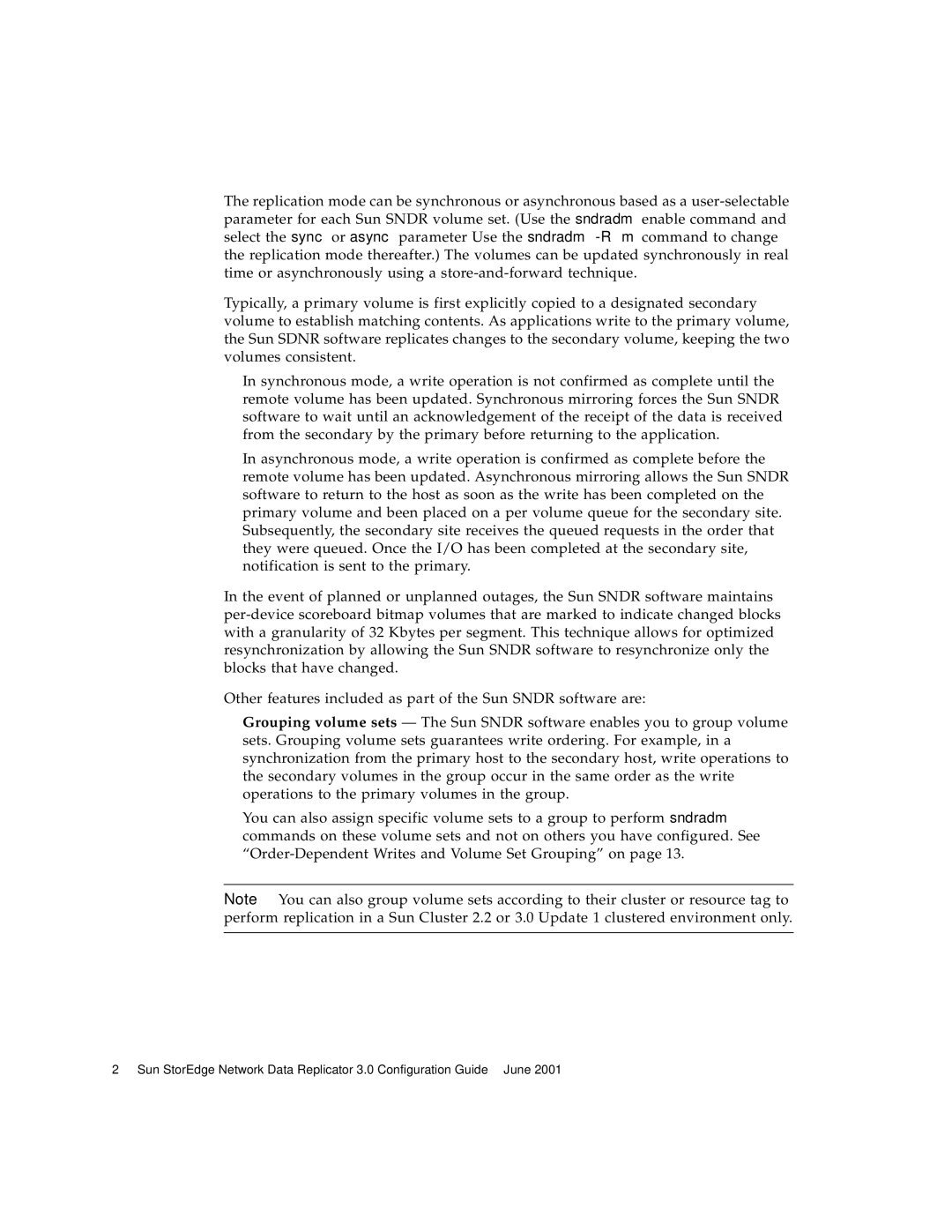The replication mode can be synchronous or asynchronous based as a
Typically, a primary volume is first explicitly copied to a designated secondary volume to establish matching contents. As applications write to the primary volume, the Sun SDNR software replicates changes to the secondary volume, keeping the two volumes consistent.
■In synchronous mode, a write operation is not confirmed as complete until the remote volume has been updated. Synchronous mirroring forces the Sun SNDR software to wait until an acknowledgement of the receipt of the data is received from the secondary by the primary before returning to the application.
■In asynchronous mode, a write operation is confirmed as complete before the remote volume has been updated. Asynchronous mirroring allows the Sun SNDR software to return to the host as soon as the write has been completed on the primary volume and been placed on a per volume queue for the secondary site. Subsequently, the secondary site receives the queued requests in the order that they were queued. Once the I/O has been completed at the secondary site, notification is sent to the primary.
In the event of planned or unplanned outages, the Sun SNDR software maintains
Other features included as part of the Sun SNDR software are:
■Grouping volume sets — The Sun SNDR software enables you to group volume sets. Grouping volume sets guarantees write ordering. For example, in a synchronization from the primary host to the secondary host, write operations to the secondary volumes in the group occur in the same order as the write operations to the primary volumes in the group.
You can also assign specific volume sets to a group to perform sndradm commands on these volume sets and not on others you have configured. See
Note – You can also group volume sets according to their cluster or resource tag to perform replication in a Sun Cluster 2.2 or 3.0 Update 1 clustered environment only.
2 Sun StorEdge Network Data Replicator 3.0 Configuration Guide • June 2001
